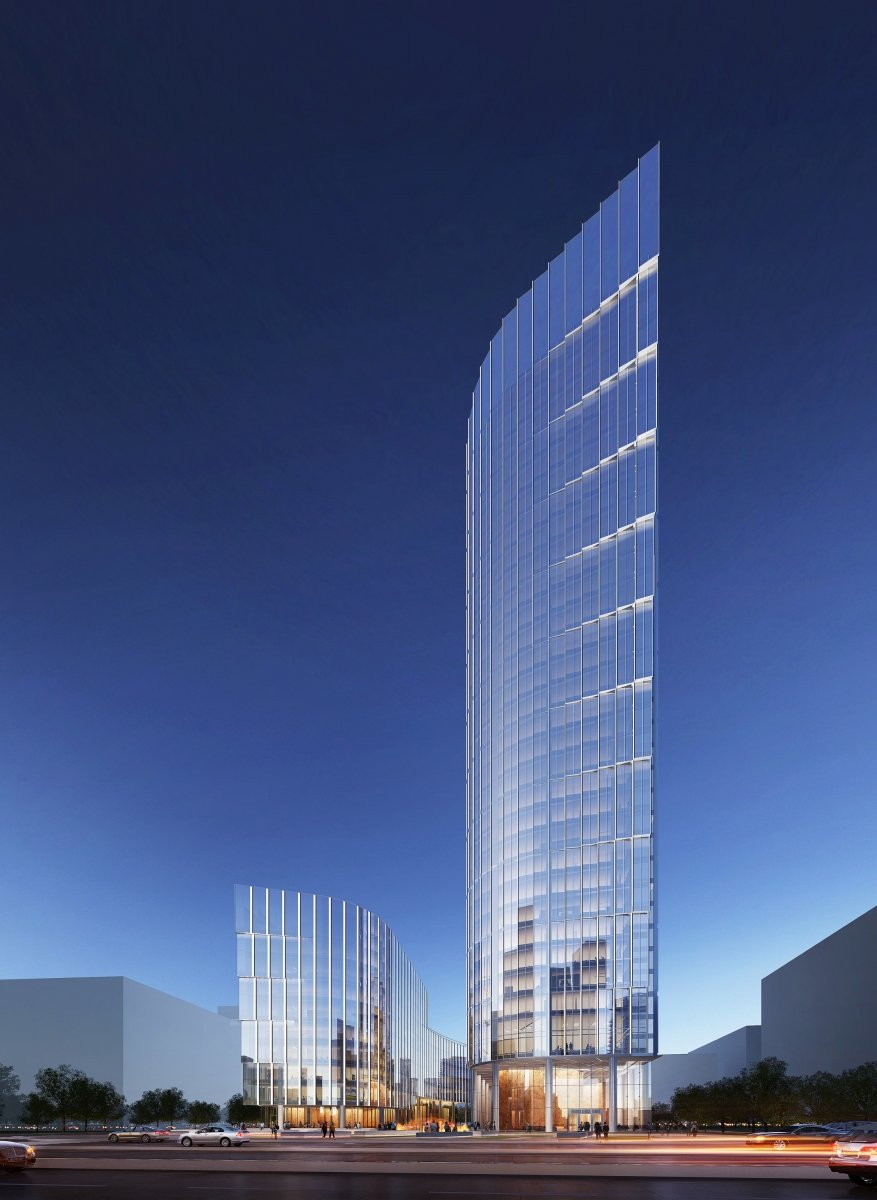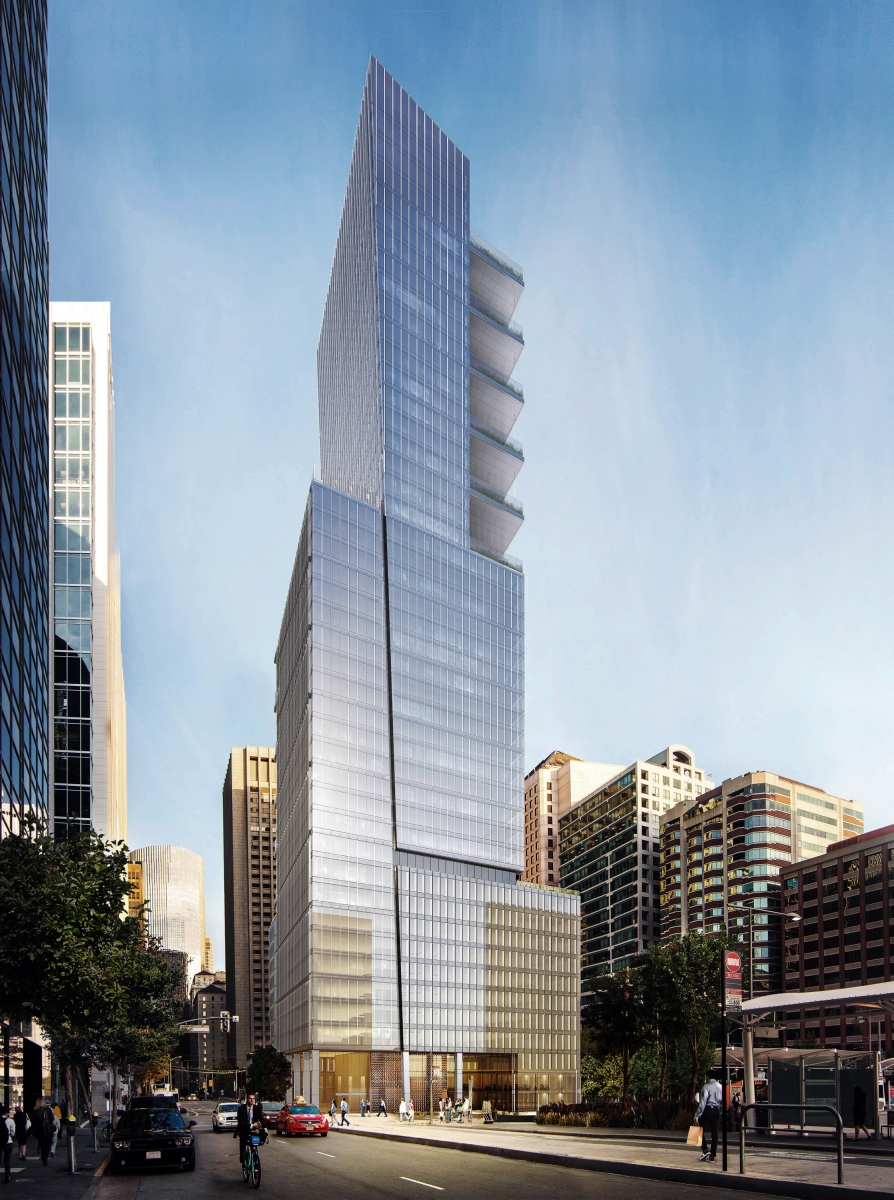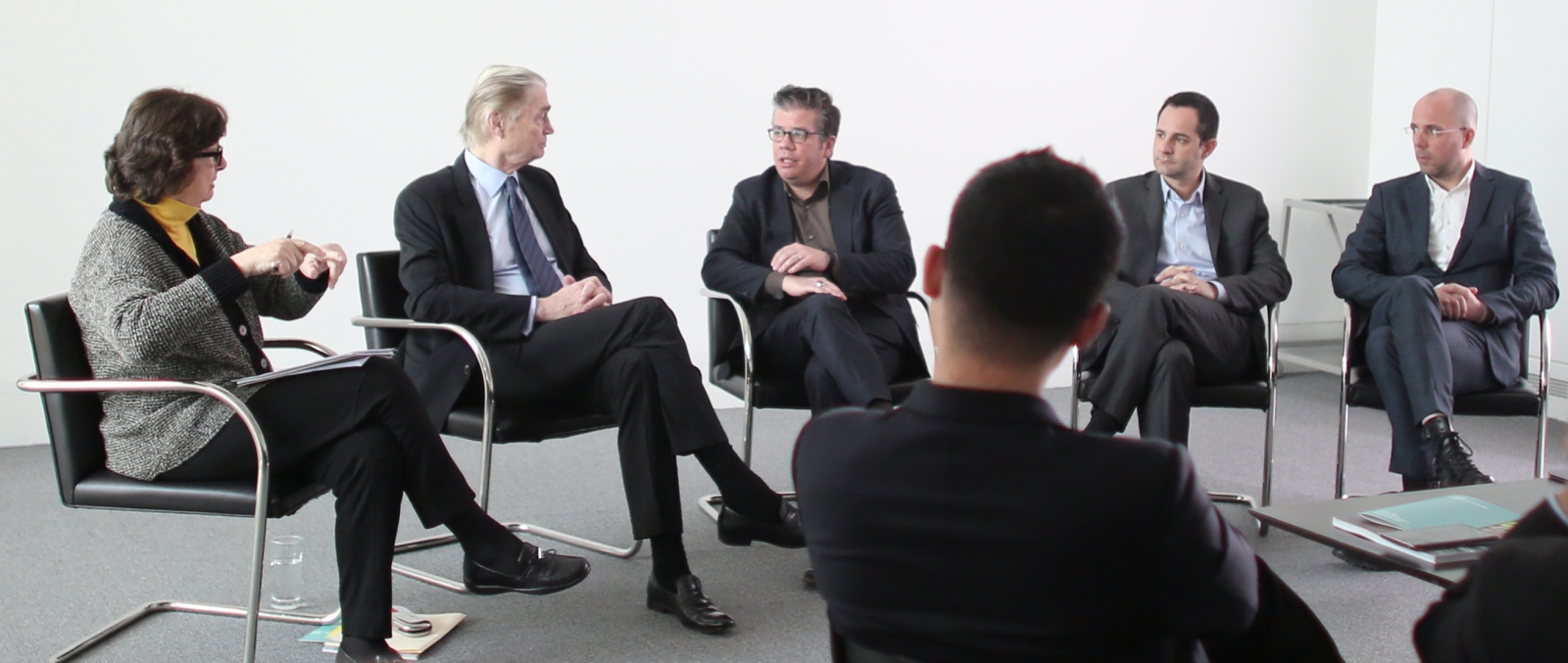
January 17, 2017
Designing Local Workplaces in Global Cities
Principals and CEO of Goettsch Partners consider how urban workplaces can be simultaneously global and culturally specific.
Abu Dhabi Global Market Square, Abu Dhabi, United Arab Emirates
© Mubadala Real Estate & Infrastructure
In this installment of the Metropolis Think Tank series Susan S. Szenasy talks to a panel of architects about creating workspaces in response to global densification, mobile technology, and the cultures of companies as well as their geographical place. The discussion took place on March 17, 2016 in Chicago with principals and the chairman and CEO of Goettsch Partners. What follows is an edited transcript of the conversation.
Susan S. Szenasy, publisher and editor in chief, Metropolis (SSS): As a firm that builds high-rises all over the world, Goettsch has a great opportunity to learn from other places and adapt innovations across cultures. Let’s first talk about when you went global.
James Goettsch, FAIA, chairman and CEO of Goettsch Partners (JG): We started expanding globally during the mid-’90s with projects in Asia and Eastern Europe. There was all this talk about the Asian Century. It came at a time when there was a strong focus on the future, which contributed to rapid growth. At the same time, Eastern Europe was starting to open up to the world, which allowed us to start a project in Prague. Globalism was really starting to happen, and we were fortunate enough to be part of the initial wave.
SSS: Being based in Chicago is important to your global position because of the city’s architecture, its quality and innovation, which is not lost on the world. Why Chicago?
JG: In a way it was very natural. Chicago also has terrific transportation with the airport. There is hardly any other city in the U.S. that is better connected than Chicago.
SSS: It’s important to note that global cities are dependent on mass transit as well as figuring out how to connect with the natural environment. People don’t need to drive. Let’s talk about your experience in one of these global cities in China.
Paul De Santis, LEED AP, principal at Goettsch Partners (PDS): Shanghai is kind of our second home. We have an office there and we are committed to having that culture influence our work. One of the things we face is getting people around. It is a city of 21 million people and six million expatriates, so you are able to do things at a large scale. Thirteen new subway lines come into the city, giving Shanghai the opportunity to expand in new ways. We are working on one parcel there that is connected to nine other parcels through a shared underground area fed by the subway systems that bring people into the workplace. There is also this incredible platform created six meters above ground that connects all of the parcels through a network of bridges and landscaped environments with access to commercial space on the first couple of levels. This gives office workers access to amenities from the towers, and it’s all vehicle-free. This type of construction is more common there than it is in the United States.
SSS: China is on steroids when it comes to building, and although these buildings try to be a part of their place, this type of scale in architecture is subject to be multiplied. What’s your approach to this condition?
PDS: It’s valuable for multiple architects and designers to work on areas like that so that we don’t create homogenous environments. One of the things that makes great urban centers is variety in architecture, urban spaces, and workplace environments. You have to be very conscious of that when you are building at such grand scales, but I think that the Chinese environment is very sensitive to that.
SSS: These newer cities, or at least new areas within these cities, tend to have a degree of sameness about them. But as time goes on, we are hearing more and more architects talking about urban quality. It seems that developers are catching on and understand that it’s really important to distinguish places. That it’s not just anywhere. It’s this place.
PDS: It certainly is a challenge when you think about how Western cities have evolved through need over time, taking years and years as people slowly migrate in and out of them. In Asia, architects and urban planners are building large-scale environments, and they’re learning what is valuable from their experiences in other cities.
SSS: Louis, you teach and practice. As someone who is also looking to the next generation and making them think about how they build and see cities, how do you see this evolution?
Elias (Louis) Vavaroutsos, AIA, principal at Goettsch Partners (LV): I talk a lot about the intentional qualities of architecture with my students. In order to keep up with the speed and rhythm at which work is constantly evolving, it’s necessary to know what’s important. For me and for a lot of our projects, what’s important is the way people experience the place. If you have a feeling for that, then you don’t get lost in the scale or density of the project. This may be paying attention to the sensuous qualities of opening a wooden door, for example. Thinking at this kind of experiential level, I find, actually allows you to prioritize and make decisions more efficiently.
SSS: This is really encouraging in a world that has rebuilt itself in a very modern, progressive way. I’d like to talk about sustainability. As architects, you have to build efficiently and provide healthy environments. What is the next phase of your wisdom on sustainability from a global perspective?
Joachim Schuessler, principal at Goettsch Partners (JS): Sustainability is, in a way, a concentration of urban settings in China with infrastructure to support it on a large scale. Paul was alluding to this urban setting supported by various infrastructures that eliminate traffic congestion. We can also look at it from a very specific building that may have high-performance façades that allow light into the building but keep heat and glare out. We are doing a project in Warsaw, and the people there are very used to opening their windows. These elements become part of sustainable developments. From a global perspective, need is used to measure sustainability. We are fortunate to have this global perspective where we can see how need and sustainability are being handled in different areas.

Mennica Legacy Tower, Warsaw, Poland
© Goettsch Partners
SSS: You must have some moments when you sit down and talk about your experiences in China, Poland, and other cities around the world. Are there some distinct cultural clues that are especially interesting to you?
LV: For the past few years I’ve been working primarily in China. One of the cultural nuances that I find aligns itself very well to my conceptual approach is the value of allegory and symbolism and a cultural appreciation for meaningful historical influences. Now, you have to be really, really careful with that. When we find some sort of symbolism, it has to be abstract so that it’s not another Chinese rock garden puzzle box, but rather it becomes the conceptual metaphor for the work.
SSS: How do you balance this symbolism so that it’s not so abstract that no one understands it but so it’s also not a cultural cliché?
LV: Very few of us get it right the first time, but that’s why we have schematic and conceptual design. We make a lot of mistakes and we draw over things, and out of this patient labyrinth of lines, there’s finally a solution that has to be meaningful, functional, affordable, and intuitively planned out so that people understand how to move through our development.
JG: It works distinctly in different parts of the world. If you are building in a certain part of the world, that place should influence the architecture in some way, but the context of the building also lends itself to the appropriateness. When we worked on the Abu Dhabi Financial Center, now known as Abu Dhabi Market Square, the project’s decision-maker saw a rendering of the space that included a green wall that had some reference to Islamic geometry. He rejected it. He said that this is an international business center, and he didn’t want to see anything that had to do with Islam. It is a completely different take on the situation, but that was what they were trying to achieve with that space.
SSS: How do you balance the interest of corporations that want to send messages of globalization, and not contribute to the sameness everywhere, but make connections to a place?
PDS: We are more interested in the people who are arriving to work every day and interacting in the environment. Our number-one goal when we do any of our projects is to provide value to that city, reinforce its identity, and elevate the lives of the people using these buildings. I don’t necessarily think we want to get caught up in whether or not every one of the projects can be the icon of each city.

Park Tower at Transbay, San Francisco, California
© Goettsch Partners
SSS: Moving on to workspaces, the San Francisco Park Tower you designed has outdoor balconies that cut through some of the walls to create meeting spaces that encourage people to gather outdoors. As you build these amazing workplaces, you also have to figure out how to adapt them to mobile technologies that allow work to happen away from the office. Do you see public amenities bringing people together?
JG: One of the biggest changes in office buildings in the last decade is the density of the user population. Twenty years ago buildings were designed for a density of maybe 250 sq. ft. per person. Now, with computers and paperless offices, that physical space is going down to the low hundreds and, in some cases, even below that. Working more with technology you don’t need to be tethered to a desk, and that’s where public spaces come in to compensate for that density. It’s a relief area where you can go and make a phone call.
JS: In this age of densification in office spaces, other spaces are designed to allow for flexibility and expansion. These spaces are increasingly becoming more important. For instance, a plaza between two buildings is a vital, inviting, and usable space during all times of the day.
LV: Yes, and when you can layer these opportunities, it is even more impactful. Outdoor communal spaces have to have immediate value, but when they can relate to indoor spaces as well, that value can be magnified. People can say ‘I’ll meet you in 15 minutes at the round stair,’ then all these things become more valuable to the daily working life of the people in these buildings.
SSS: Massive urbanization has taken over the world. You are building this world. To complement the global perspective, I’d add that it is also important for us to know where we come from. All over the world, but especially in the United States, we went away from cities, and now with globalization we understand the importance of things like walkability, nearby amenities, and connecting.
LV: When we work on big projects, we really need to think about the democracy of space. By this, I mean to think about how close one building is to another and how much space we are providing for walking around and through things. It is never one answer in one circumstance, but it is something that we always have to be mindful of, whether we are purposefully trying to bring people together or trying to give them space to go about their daily life and do what they need to do in comfort without having to feel like they are being smashed like sardines.
SSS: To that point, a lot of different cultures come to these world cities. These cities are about interacting with the world. I’m really glad to hear that the thinking is as much about the place as it is the basic humanity of everyone.

Susan S. Szenasy with (from left): James Goettsch, FAIA; Paul De Santis, LEED AP; Elias (Louis) Vavaroutsis, AIA; and Joachim Schuessler.
Photo Courtesy Robert Trautman
The Metropolis Think Tank series is presented in partnership with DuPont Surfaces, Sunbrella, and KI.
Panelists from Goettsch Partners: James Goettsch, FAIA, chairman and CEO; Paul De Santis, LEED AP, principal; Joachim Schuessler, principal; Elias (Louis) Vavaroutsis, AIA, principal; Moderator: Metropolis, Susan S. Szenasy, publisher and editor in chief.





